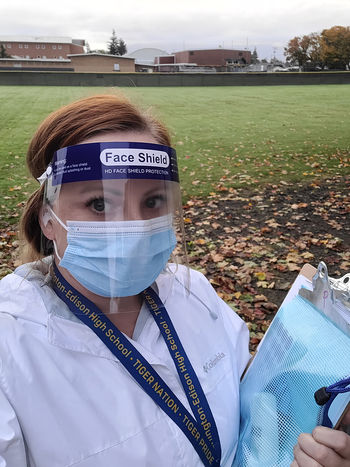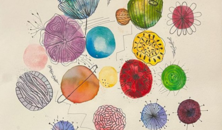School nursing is more than handing out Band-Aids and ice packs

Anyone who has spent time with students suffering from chronic aches knows that delivering at-school health services is critical to both the emotional/social health of students, and to their academic success. Still, the role of the school nurse is often misunderstood.
"Everyone thinks we hand out band-aids and ice packs," School Nurse Organization of Washington (SNOW) Nurse of the Year Tessa McIlraith mentioned in a letter she wrote last year, to a podcast called Antidotes, Stories in Medicine. She sent the note because she loved the podcast and, basically, wanted to educate others about the thousands of things school nurses do every day.
McIlraith, a lead nurse in Burlington-Edison, was working as an orthopedic operating room nurse when a colleague mentioned she thought McIlraith would make a great school nurse. The work in the orthopedic OR was slow so she signed up to be a substitute school nurse and the rest is history.
"I love public health," she says. "I love kids and I really like awake patients." She has been a nurse for 12 years, five at Burlington-Edison, where she is currently serving with two other nurses and nine health assistants for the 3,500-student district. In addition to her lead nurse duties, she serves 1,400 students in the elementary and high schools where she splits her time.
McIlraith was "secretly" nominated by her colleagues. She had no idea she was being recognized until she began recognizing herself at a virtual SNOW annual conference this month.
"They snuck my husband and some other colleagues on to the meeting," she says, "and when they began talking about the School Nurse of the Year, I started recognizing voices and realized they were talking about me."
With the current pandemic, McIlraith says her job has changed, but that she is still working on 504 plans and health care plans. She focuses on both in-person and online learning. She says her work continues to be centered around public health and helping people navigate healthcare within a school setting.
As the trusted health care professional in school, McIlraith says, she tries to let her educator colleagues know, "I got you."
"I try to be open and available to them and remind them not to feel like they're asking a dumb question," she says. She has been doing a lot of classroom walk-throughs with teachers and other educators as students begin returning. Burlington-Edison schools has opened doors to some students with special needs and welcomed their K-2 students back last week.
"I was so proud of them," McIlraith says. "There was no complaining about masks; they were washing their hands and asking me to take their temperature."
McIlraith is a proud advocate for school nurses and says the work is rewarding. As a podcast guest, she gives people a glimpse at what school nurses do on a "typical" day. In her letter to the podcast host, she said, "Today, for example, while trying to find donations of fruit for National Healthy Food Week, I had to convince a student with Autism Spectrum Disorder (ASD) that he most likely did not contract Tuberculosis (TB) at school. Plus wrapping (a) sprained wrist, curling iron burns, self-inflicted burns from an air compressor, (dispensing) daily meds, (conducting) anxiety check-ins, creating new Automatic External Defibrillator (AED) protocols, finding policy for soon to be mandated Narcan, managing diabetes via text (because high schoolers don't "come to the health room"), doing a drug impairment check . . . " She says mentioning that also, that day, while fashioning a "Boy Scout arm sling"from a triangle bandage, she explained to a high schooler why he couldn't drive himself to his next off-campus class after dropping a weigh bar on his chest leaving him unable to lift his arm.
McIlraith, who serves as the legislative chair on the SNOW board, lives on a farm with her husband, two daughters and 11 animals from cats to horses to pigs. She teaches acrobatics and dance in her "free time." She says one of the most gratifying things about her work is helping students and their families learn how to navigate their health and education goals.


